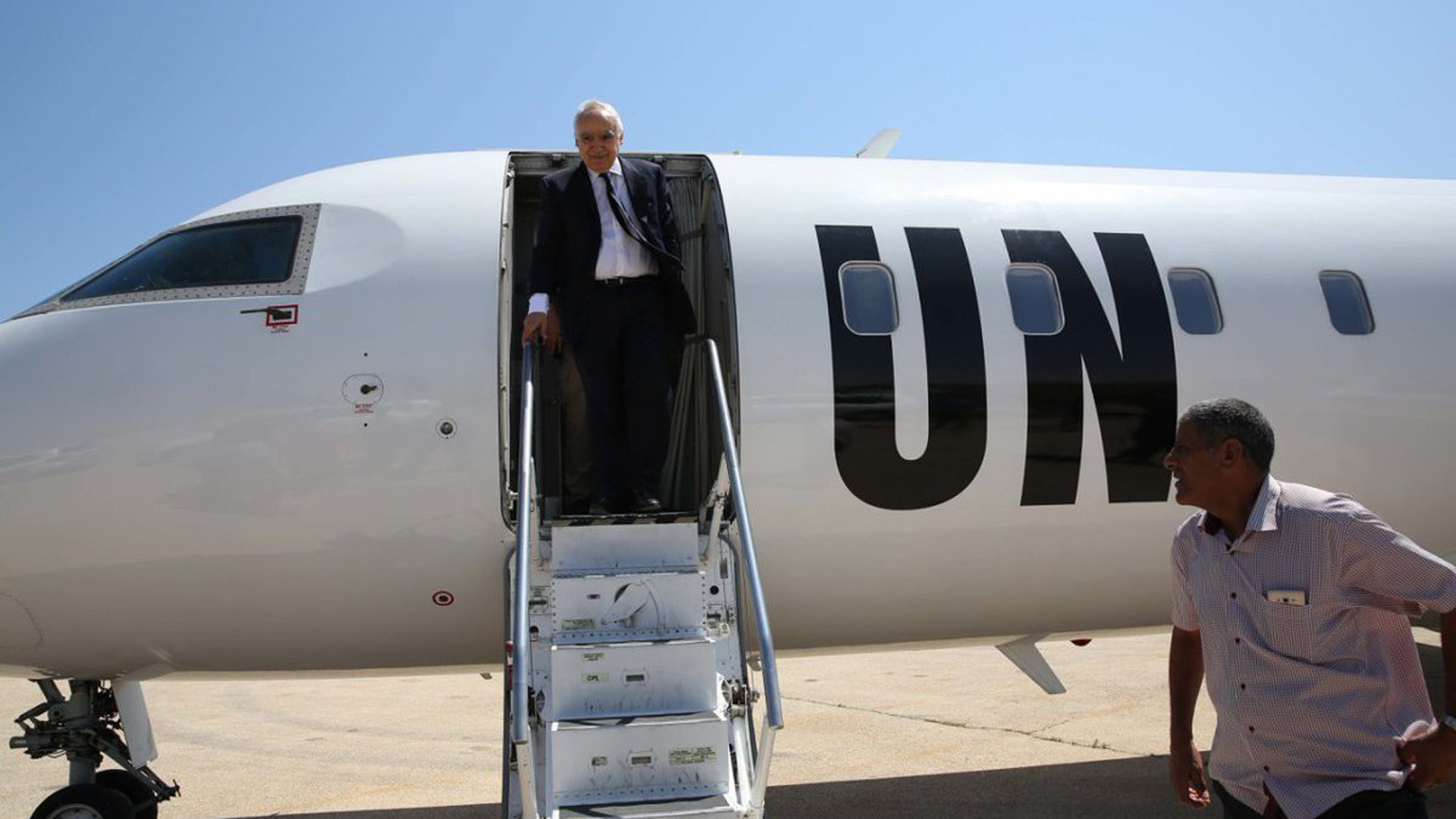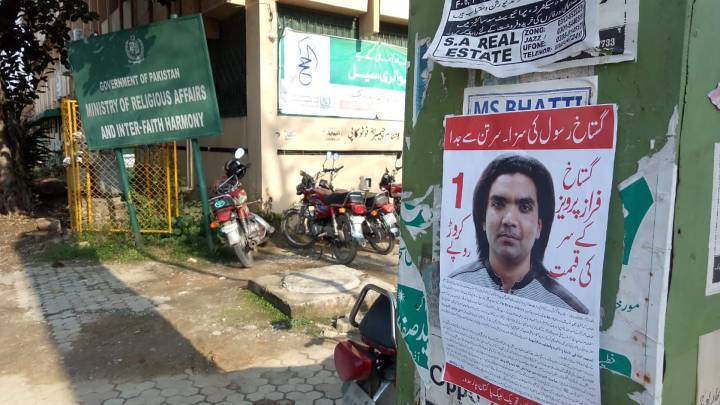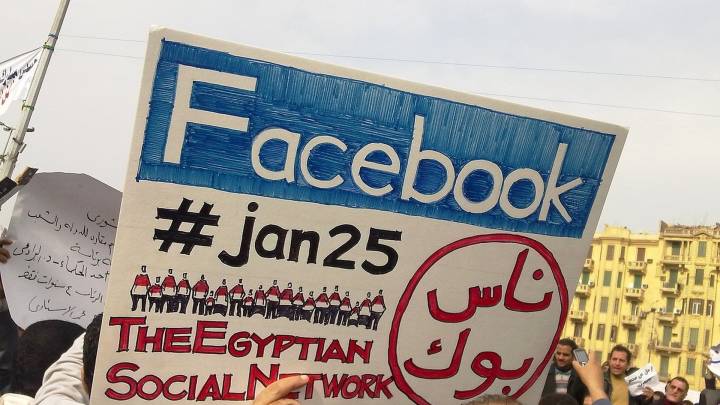Libya entered a new era in 2011 – full of hopes but burdened by setbacks. A look back at the most important developments over the past eight years from the fall of Gaddafi to the Battle of Tripoli.
The eighth anniversary of Muammar Gaddafi’s inglorious death in Sirte on 20 October 2019 was overshadowed by the battle for Tripoli. Despite all the challenges, Libya has undergone enormous changes since Gaddafi’s demise, especially when one examines what the country was like 42 years ago and what followed.
The country once banned political affiliation, and identity and ideology were imposed from above. Since then, Libya has developed into a nation filled with civil society initiatives, several political parties and political structures. Some of these manage to carry out the obligations of state at the local level despite the most difficult conditions. Since 2011, Libyans have had little respite. During the last eight years their country has embarked upon journey of self-discovery which has entailed the establishment of political apparatuses and the confrontation with its own history. All this while being plagued by daily political rivalries and constant military conflicts. As yet, the process remains unfinished.
Libya has come to expect a high degree of resilience from its inhabitants throughout 2019. This comes amid fears that many Libyans are planning a future abroad if living conditions do not improve. Never an easy decision. Especially considering what high hopes there were for the future of a free Libya back in 2011. This is also why a look back over past events is essential to understand where Libya stands today and how the country will develop in the future. What triggered the protests in 2011? How does Libya differ from other Arab Spring countries and what milestones have marked this journey?
The inspirational effect that the protests and the demands for political freedom and dignity in Tunisia and Egypt had on Libya is indisputable. Yet it is obvious that Libyans had their own reasons for taking to the streets in 2011. Muammar Gaddafi’s “Green Book” was the ideological underpinning of the idiosyncratic political system known as the Jamahiriyya, which can be roughly translated as “rule of the masses”. In practice, this system was the product of almost four decades of totalitarian rule in which all spheres of social coexistence were ultimately unfree. At the same time, this system was detached from any consolidated state structures. Instead, Gaddafi, the self-proclaimed “brother leader” ruled according to a principle that many Libyans call “controlled anarchy.” It was premised upon the tactic of occasionally switching allies while keeping a few figures in the fold (mostly family member or tribal members), and was characterised by distrust of institutions. The army’s influence and importance dwindled, especially in the final two decades of Gaddafi’s rule, which saw a series of failed coup attempts. During this period, Gaddafi’s erratic adaptations of the state ideology changed on a whim according to which way the wind was blowing internationally. The remnants of the Jamahiriyya system eventually outlived its creator, who had strived to embody this political philosophy.
The first public expression of dissatisfaction in Gaddafi’s rule in Libya emerged in February 2011 in Benghazi, when demonstrators gathered in front of a police stations and denounced the high level of corruption in the country. The protests from then on spread quickly throughout the rest of the country. The regime’s brutal suppression of the demonstrations precipitated the evolution of protests into an armed revolution, which eventually gained aerial backing from NATO. Gaddafi’s fall left Libya facing an enormous challenge. How should things proceed in a country with a marginal political culture of self-determination? On what foundation could a potential new force build a viable state?
A Difficult Transition from Dictatorship to Democracy
Libya faced the Herculean task to transform a totalitarian system, tailored to a ruler, into a pluralistic democracy. The Libyans who participated in the overthrow of the Gaddafi regime in 2011 were well aware of the scale of the undertaking. In the days immediately following the demonstrations a transitional institution had already been established, the “National Transition Council”. The council proactively worked not only to set the revolution on a firm structural footing, but also to curry favour internationally for the Libyans’ commitment to democracy and a future without Gaddafi.
Their intervention on the issue of the revolutionary militias was one of the first successes of the “National Transitional Council”. The committee also laid the foundations for a transition to democracy in Libya when it called elections for 2012. The “National Transition Council” set itself an ultimatum and committed to disbanding as soon as a parliamentary representative body, the “National Congress”, was elected. The congress was tasked with overseeing the transition to democracy.
The institutions were then to be formed on the basis of a constitution. Elections for the “National Congress” in 2012 took place under difficult circumstances. Libya lacked a culture of public debate in which political issues could be freely reported on and discussed. For decades there had been no political parties, as groups and associations that could potentially have developed any kind of political opposition to Gaddafi were banned. At a societal level, there was no discussion of either identity or ideology.
For many Libyans the central question of the relationship between religion and politics was simply a matter of course. It was a given that Islamic values were an integral part of Libyan society, and should also play a role in politics. But at the same time it remained unclear how this relationship should take shape in practice. The societies of the Middle East and North Africa regularly address this issue and then agree on a majority approach that is pursued until societal developments question the adopted stance again. However, the question of the relationship between religion and politics is particularly challenging for a society that has just freed itself from a totalitarian system.
The organisation of democratic elections posed challenges for many Libyans. To this day Libyans share anecdotes about those first elections in 2012. About the election helpers who say that they were called to the polling booths by individual voters to advise on whom to vote for and how. Or family members who tell of how it was the first time that the question of who to vote for came up in conversions around dinner table. These discussions often involved tribal loyalties, personal relationships with candidates, but also the party profiles of some applicants. In short, holding elections in a country where there were no established political groups and citizens and where no fair and free elections had been held for decades was a risky undertaking.
Nevertheless, in the summer of 2012 Libya proudly boasted a parliament that emerged from democratic elections. The country was right on track for an inclusive political system. But the revolution never got rid of the demons that the overthrow’s violent character had conjured up. A turning point in this regard was the murder of US Ambassador Christopher Stevens after an attack on the embassy in September 2012. The case showed the clout of Islamist militias as well as the powerlessness of elected political representatives. This inability to guarantee security has plagued Libya to this day. As a result, militias of all stripes became increasingly involved in the political structures of post-revolutionary Libya.
Libya Three Years After the Revolution: From Political Dispute to Civil War
The lack of a monopoly on the use of force and the subsequent strengthening of the militias became the Libyans’ downfall only a few years after Gaddafi’s exit. The “National Congress” had to find a compromise in 2012 because it was supposed to lay the foundations for the country’s future political development. The committee initially worked together and while disagreements were commonplace, these did not for the time being escalate. Three factors contributed to Libya slipping gradually however into civil war.
The exact version of the events and who was to blame for them remain controversial to this day. What is certain is that the bitter quarrels over the Political Isolation Act led to the disintegration of the elected institutions. In the spring of 2014, militias stormed the parliament building to force the vote. The bill roughly corresponded to the Iraqi model of de-Baathification, aiming to exclude former Gaddafi loyalists from future political participation.
However, the law quickly developed into a political football between rival politicians. One reason for this was the very vague definition of “loyal to the regime” and hence who should be excluded from political participation under the new regulation. This dispute also revealed the deep-seated mistrust of some Libyans towards their fellow citizens. Another legacy of Gaddafi, who cultivated favouritism to sow mistrust and play different sections of the population off against one another. The political squabbling also exposed the unwillingness of the emerging elite to share power or to lose the influence they had just gained.
Secondly, Libya is still experiencing the consequences of the war against the Gaddafi regime. Weapons and ammunition have been flowing into the country since 2011, when the rebels captured many weapons from the regime’s arsenals. In the annual surveys of the Swiss NGO “Small Arms Survey”, Libya has ranked high on the lists of per capita weapons ownership for years.
Thirdly, the ambitions of General Khalifa Haftar shape Libya’s post-revolutionary era. The 76-year-old general was among the military men that bought Muammar Gaddafi. However, he clashed with the ruler over the years and went into exile in the USA where he lived until 2011. On his return in 2011, shortly before the start of the NATO intervention, he had expressed his ambition not to be just one of a number of militia leaders, but to lead the revolution and to replace it entirely after Gaddafi’s overthrow. But this opportunity quickly evaporated and his militias did not initially play an important role in post-revolutionary Libya.
This changed with the flare-up of the Libyan civil war in 2014. Haftar began styling himself and his militia “Libyan National Army” (LNA) as pioneers against Islamist terrorists and therefore found regional and some international attention. In Libya itself, frustration grew over the “National Congress”, which was unable to provide stable conditions. The political stalemate played into Haftar’s hands. One month after the start of the general’s offensive against Benghazi, the first chamber of the Libyan parliament, the Council of Deputies, which was to replace the National Congress, was formed after elections with a turnout of just 18%.
In part due to the National Congress’ reluctance to give up its power so quickly, the situation escalated into a civil war in which two rival parliaments, each with allied militias, faced each other and split the country. In the west, in Tripoli, the “National Congress” on the side of the militia alliance “Dawn Libya”. In the east, in Tobruk, the council of deputies. By officially tying his LNA to the Tobruk Parliament-in-Exile, the General secured political influence over Libya’s further political development.
Islamic State in Libya: Jihadists Gain a Firm Foothold in Libya
Libya’s disintegration into divergent powerbases offered the “Islamic State” (IS) the opportunity to establish itself in Libya. After an initial presence in Derna in the east of the country, IS withdrew from the city in 2015, mainly due to military confrontation with other jihadist groups more embedded there. IS moved to Sirte, the hometown of Gaddafi. Its inhabitants, especially those of the influential Warfalla tribe, had enjoyed privileges under the regime and felt structurally excluded from the post-revolutionary order. At the local level, IS initially entered into cooperation, but then quickly switched to their usual modus operandi: a tyranny that tolerated no contradiction whatsoever.
IS proclaimed the “Wilayat Tarabulus” and increasingly targeted the nearby oil fields at Sirte – provoking the USA and UK to emerge back onto the scene. In addition to military support for the Libyan anti-IS coalition, several Western state also pledged diplomatic support for a political solution for Libya. Subsequently, an agreement was signed in December 2015 in the Moroccan town of Skhirat, which led to the formation of a “Government of National Unity”. The common struggle against the IS should have provided the momentum to overcome the political division of the parliaments of Tobruk and Tripoli. One of the main obstacles is that General Khalifa Haftar still does recognise the “Government of National Unity”. At least in December 2016 IS was driven out of Sirte – at the price of destroying a large part of the city.
Libya today: a divided country that will not abandon the ideal of the revolution. Currently, the “Government of National Unity” under the leadership of Prime Minister Fayez al-Sarraj, based in Tripoli, is the only representative body of the people in Libya recognised by the UN, but still lacks legitimacy. Its sphere of influence is limited to the west of country and even there its power depends mainly on allied militias. There armed groups are nominally loyal to the government, but de facto they operate on their own account and through influence over the government rather than vice versa. In addition, many of these militias are riddled with criminal network structures. The medium- to long-term goals of the Skhirat Agreement – territorial integrity under a unity government that stabilises the political and economic situation and security in the country and thus creates the basis for a more inclusive Libya – were undermined only a few months after the signing.
After the departure of Khalifa Haftar, who with his LNA dominates large swathes of the eastern part of the country, these goals have soberingly receded into the far distance. Haftar, however, was not the only one to take a critical view of the agreement. Sections of the country’s political and military forces were not sufficiently involved in the negotiation process and could not be persuaded afterwards to act in accordance with the agreements made. Today Libya is divided between rival administrations in the east (Tobruk) and west (Tripoli) of the country. In addition, influential militias and tribes govern relatively autonomously in parts of Libya.
Ghassan Salamé, head of the UN Support Mission to Libya (UNSMIL), planned a new attempt for mid-April 2019 to gather all actors together to bring an end to the seemingly endless transition phase and division and to bring “institutional and political normality” to the country. This conference should also bring together some representatives of Libyan civil society. Tribes from the Fezzan region in the south and mayors of influential cities like Zintan or Misrata has welcomed the initiative, hoping for a more inclusive process than in the previous rounds of negotiations in Paris and Palermo. But Haftar put an end to the revival of the political process when he set his LNA in motion towards Tripoli on 4 April – just days before the planned start of the meeting in Ghadames on 14 April. With the launch of an armed offensive in western Libya, Haftar presented his claim to rule the whole of Libya, not making himself (alone) dependent of international conferences. Previously, he had militarily asserted himself in the Fezzan at the beginning of 2019 – so the western part of Libya with economic heavyweights such as Misrata and the capital Tripoli was the last piece of the puzzle.
However, the western part of Libya differs significantly from the eastern and southern parts of the country. The military offensive in the south of the country is qualitatively light years away from what Haftar expected in Tripoli. Haftar had underestimated the rapid mobilisation and partial fraternisation between Tripoli and Misrata militias into a counteroffensive. On the one hand, the ruling militias in West Libya wanted to defend their spheres of influence, while at the same time many Libyans, despite the unrest of recent years since the fall of Gaddafi, are under no circumstances prepared to live under an autocratic ruler again – and ready to throw everything into the balance for that.
Haftar received military support above all from Egypt and the UAE, which trust him as a partner in the fight against Islamists (close to the Muslim Brotherhood) and intervene directly in the power struggle in Libya through a steady influx of weapons and air force operations. But also the opposite side gets military support from abroad, especially from Turkey. The UN has repeatedly revealed these violations of the arms embargo, and the consequence are still to be seen today. Libya is developing more and more into an international battlefield – in the meantime mercenaries are fighting Sudan as well as the Russian Wagner Group in Libya.
In September 2019, Oliver Owcza, Germany’s ambassador to Libya, announced that Germany would initiate a three-stage process under the auspices of the UN, the main focus of which would initially be to stop external interventions in Libya and, building on this, to find a compromise in Libya that would lead to peace. A truly Herculean task against the background of the situation in the country in autumn 2019.




